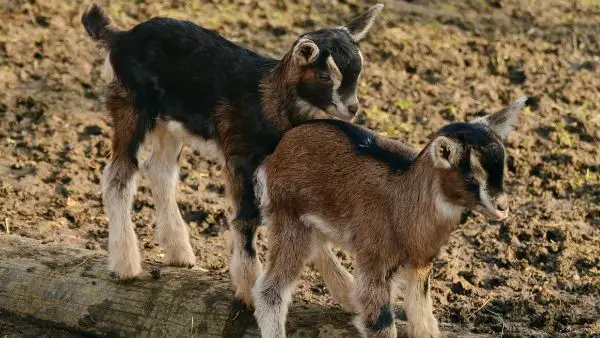With the way the world is going today, many people are looking at homesteads and learning to live off the land and be able to care for yourself and or your family. It can be difficult to get started as there is so much to consider. What plants should you grow, what type of animals should you get, etc. Sometimes learning and researching is half the battle!
There will always be more questions. Because of this, we have created a list that will help you decide what to grow. There are many different benefits to growing different types of crops – some for nourishment, and some that are useful and can be used for things other than consumption. This article will list the 11 best crops to grow on a homestead.
- Corn
- Sweet Potatoes
- Potatoes
- Wheat
- Leafy Greens
- Garlic
- Hemp
- Green Beans
- Onions
- Tomatoes
- Peas
Corn is a Basic and Easy to Grow Crop
This is probably the easiest and most forgiving plant you can grow, and it is very versatile. Corn should be planted in several short rows. The seed should be placed in the trench about an inch down in the ground and 3-4 inches apart. Depending on the type of corn you are growing, the plants will take anywhere from 70-96 days to mature and be ready for harvest.
Corn is absolutely the best when picked and cooked fresh on the same day. It can also be shelled and frozen for later use. It can be removed from the cob and canned to preserve even longer. The shelf life for canned veggies is around a year, but it is safe to consume for 2 years. For an easy way to make a large batch for a party or family get-together try making it in a cooler. The butter and salt soak right in for the best tasting corn on the cob you’ve ever had.
You can also dry your corn and ground it into corn meal (flour). You can use this for many things – from baking to breading on fried food. It is extremely versatile and can be used in savory and sweet situations. Just make sure that when you are buying your seed that you do not purchase the seed that is intended for animal feed! The best seasons for growing corn are spring and summer.
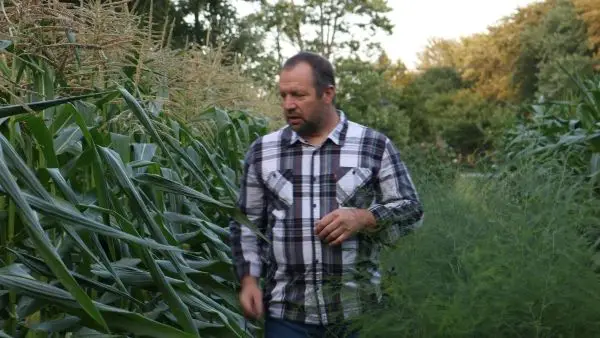
Sweet Potatoes are a Plant You Won’t Want to Count Out
These are another great and versatile plant you will want to grow. Sweet potatoes are a bit harder to grow than some other vegetables, but they are well worth the trouble. Not only are they delicious, but they are very nutritious and can play a vital part in your diet. They are known to:
- Support good gut health
- Promote good vision
- Can help to fight cancer
- Support your immune system

Sweet potatoes grow from little vines that are called slips. These slips are the vines that will grow out of your sweet potato when left in your pantry for too long, much like a regular potato. The slip should be removed from the potato and buried in the ground to create a new plant.
To encourage your sweet potato to sprout slips, you can poke it with toothpicks and suspend it in a jar with water in the bottom, having it submerged about halfway. It takes around a month or so to get the slips to where they are usable. They like warm temps, so when incubating always keep it warm, and make sure your soil is warm when transferred.
Potatoes Are Full of Vitamins and Deliciousness
Surprisingly, while delicious, potatoes are actually quite healthy and have a lot of great benefits to your health. They are packed with vitamins and minerals and can be used in a myriad of ways! They can be classics like mashed potatoes and baked potatoes Or, you can dress them up and make a whole meal out of them. Much like corn, you can make a starch out of this veggie that can be used as a thickening agent for soups and gravies, etc.
Quite different from sweet potatoes, potatoes are a tuber, whereas sweet potatoes are a root vegetable. They do grow differently than sweet potatoes but are quite an easy plant to grow. Much like a sweet potato, you plant a potato from a sprout from an existing potato. You can plant the whole potato or just cut the potato in sections and plant it that way. Our favorite variety is called Kennebec. They have thin white skins and are very tasty compared to anything found in the grocery store.
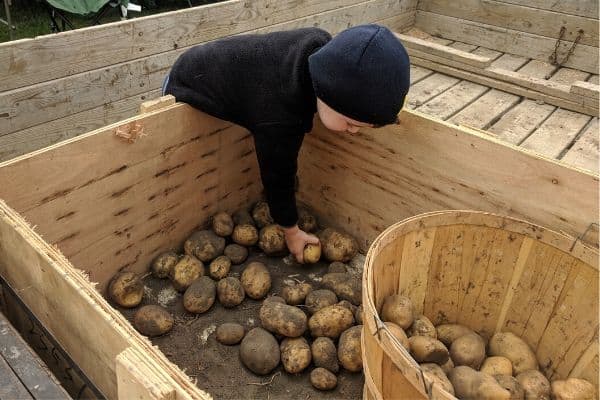
It is especially important not to remove the sprout from the potato as that will kill the sprout. You burry the potato about ¾ of the way down into a large pot and completely cover it with dirt. Or dig a trench about 8 inches deep and plant your potatoes about a foot apart and cover with 4 inches of soil. After the plants get about 8-10 inches tall, cover the stems with more dirt. This is called “hilling” and can be once more when the plants reach another 8-10 inches above the first hill. In about 90 – 110 days, your potatoes will be ready to harvest!
Wheat Will Become Your Must-Have Crop
Wheat is a staple in many people’s diets. Once ground wheat is turned into flour, and we all know what we can do with flour!
- Baking – breads, cakes, etc.
- Making Pasta – spaghetti, macaroni, etc.
- Alcohol
- Starch
Although there is practically an unlimited list of things that we use wheat for, it seems like it would be daunting to grow. But growing wheat is much easier than you think.
There are two seasons for wheat – winter and spring. The type of wheat you wish to grow will dictate when you will plant it. The planting and growing process will be mostly the same regardless of the season. Once you are ready to plant, you will sow the seeds in rows. Winter wheat needs to be about 2 ½ inches in the soil, while spring wheat is ok around 1- and 1/2-inches deep.
When harvesting wheat, it is as easy as grabbing and cutting the stalks. Once stalks are cut, they need to be bound together in small handfuls using twine. They will need a well-ventilated area and set up to dry out. Once dry, you can begin the threshing process, which is time-consuming. It is the process of removing the grain from the husk. Once that is complete you can start using your wheat!
Leafy Greens Offer a Variety of Options
Leafy greens are a must-have on your homestead. They are packed with vitamins and nutrients and are so tasty when they are fresh!
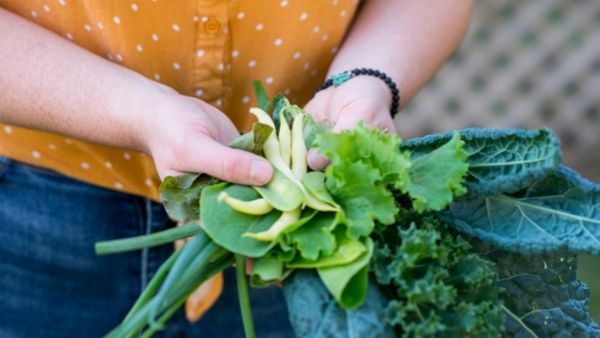
Lettuce Will Soon Become Your Next Favorite Crop
Lettuce is a winter crop. It does not like the heat at all. It is quite easy to grow and is ready to harvest in about 6 to 8 weeks. When planting lettuce, it is good to incorporate compost in the soil since it provides rich minerals to the soil. Seeds should be planted about 6 to 18 inches apart as the heads of lettuces can get quite large.
The ideal temperature range to grow lettuce is between 45 and 80 degrees. Hot weather will make the leaves bitter, and if it gets too cold, they will freeze. It is best to try and keep the plants hydrated because the right amount of water will make the leaves the perfect texture to eat. General rule of thumb is when the top layer of soil is dry, to water them again.
Spinach is a Man’s Best Friend
Spinach is an excellent addition to your garden. With its health benefits, you cannot go wrong. You can put it in so many different things from omelets to smoothies to pasta! Spinach does best in cool weather, so optimal planting is late summer.
Spinach can be grown indoors or outdoors. If you have the space indoors, it takes about 6-8 weeks for it to be ready to harvest. Growing spinach outdoors will take around the same time frame, 6-8 weeks. Either climate will do, but if grown outdoors, your time frame will be much smaller since, like lettuce, the optimal time frame is to plant in late summer to harvest before the first frost.
Collard Greens are not Just for The South
These are a bit different from their leafy cousins – they like heat and the sun. Best grown in the summertime, they like to stay out of the shade as much as possible and bask in the sun all day. They also need to stay well-watered and need plenty of space to grow. It is recommended to place seeds at least 12 inches apart as, unlike lettuce, they do not grow in a tight head and are quite spaced out.
Garlic Is Practically a ‘Cure-All’
Garlic is an easy way to spice up a dish, and it has some great health benefits as well. So much so that it is treated as a supplement and you can purchase garlic pills. Some of the benefits are:
- Helps regulate blood pressure
- Can combat sickness like the common cold
- Is packed with vitamins and minerals
- Improves your cholesterol level
And the list goes on! It is a great addition to your garden and is quite easy to grow.

Most people grow garlic outdoors in the garden, but it can be grown inside as well. It likes moderate temps, so if planting outside optimal time to plant is spring or fall. When planting garlic, you use another healthy garlic clove to get the process started. You take the head of the garlic, and carefully separate the induvial heads, trying not to harm the roots.
You can leave them stuck together on the bottom, or you can remove them individually and plant single cloves. Whether planting indoors or outdoors, plant your garlic cloves, fully covered, about 2 inches deep, and about 8 inches apart. Keep them well watered and you will have cloves ready to harvest in about 9 months.
Because it takes so long for it to fully mature, it would be a great idea to space out your plants’ time frame. Every few months, start a new batch, and you will always have new garlic ready to go!
Hemp Will Help in More Ways Than One
Different from its cousin cannabis, hemp does not contain TCH that affects the body the way cannabis does. Hemp is quite useful, and although you do not consume it, it has so many uses!
- Can be used to create clothing and shoes
- Contains seeds that can be converted into milk
- Can make products like soap, paper, and even extremely strong rope
Although the average person may not necessarily be able to produce all of that, with the knowledge and skill, you can use it for so many things.
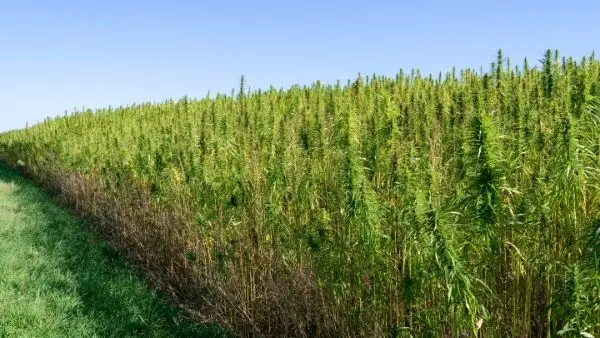
Probably the most common and useful thing that can be created with hemp is CBD oil. Very different from TCH found in cannabis, CBD does not contain and psychoactive properties, and you will not experience a ‘high.’ CBD is an oil that is found in hemp and has many uses:
- Relieves pain
- Relieves stress, anxiety and helps with depression
- Has healing properties
- Aides in sleep
- Can alleviate cancer-related symptoms
- Helps with nausea
While there are so many positive effects, many people do not like to associate with the plant because it is so close to its cousin, cannabis. It is extremely easy to grow, and grows in the wild as a weed, hence the slang name for the plant.
Green Beans Are an Easy Crop to Grow
Beans have so many positive attributes. Full of fiber and nutrients, they can be used in place of meat and are an excellent source of protein. Green beans are the easiest of the bean family to grow.
There are two general varieties of green beans – pole green beans and bush green beans. The difference between the two is how they grow. Bush green beans grow like a large bush-like plant from a single seed. They grow outwards and need plenty of space. Generally, they take about 50-60 days for both varieties, to harvest.
Pole green beans grow upward and need something for the vine to wrap around – a pole, trellis, or something of that nature. A couple of seeds should be dropped into a hole, and once the bean starts to sprout, it will search for something to hang on top and wrap its vines around. These types of beans are a little easier to harvest as they will be more visible and accessible, and you will not need to crouch down and search like you do the bush variety.
Onions Have Many Unknown Benefits
Onions are a superb ingredient to work with. They add flavor to many dishes; they are versatile and are easy to grow! Much like most vegetables, onions have some surprising health benefits such as:
- Can help regulate blood sugar levels (when consumed raw)
- Can help to prevent bone loss and promote good bone density
- Can reduce risk of certain cancers
- Can help fight inflammation
On top of being delicious, they have benefits that are hard to overlook. Mother Nature did a pretty good job on these.
The process of growing onions is similar to most vegetables. They do most of their growing underground, so you will just see the stalks sticking out. They do well in warm weather, so planting them in the springtime when the ground is workable is the optimal time to plant.

Instead of seed, onions are planted with what are called bulbs. You can buy a pack at a garden store. Or you can sprout onions that you already have at home and transfer them to the soil. You can sow them in long rows, where the spacing of the bulbs are at least six inches, and the rows are at least 12 inches apart.
Tomatoes Are Easy to Grow and Very Useful
Tomatoes are a perfect plant for your garden! Not only are they great on sandwiches and burgers, but they are also bases for sauces and soups. Tomatoes are quite acidic and have tons of vitamins and minerals. They grow best in the summer months and love the heat and sunshine.
Growing tomatoes from seeds can be a difficult feat for someone inexperienced. They require a lot of care, and if conditions are not ideal, then they will not grow. For this reason most people will purchase a baby tomato plant that can be transplanted immediately into their garden, which is much easier than growing from seeds. Once planted, it is good practice to put a tomato cage around them while still small.
This is done so that as the plants grow, their leaves and arms can lean on the wire cages. Once they start to flower and fruit, their arms can break from the additional weight if not supported. They are easy to care for, require water daily, and are susceptible to tomato bugs. They eat the leaves and flowers, so you will want to watch out for the pesky creatures.
Peas Are Tasty and Easy to Use
Peas are a garden staple since they are healthy and yummy. Growing peas requires a specific type of soil – sandy loam – which has very excellent drainage. Peas do not like a lot of water in certain stages of growth. You can purchase specific soils or additives at your local garden store if your soil is not the correct soil type.
When growing peas, you can sow them directly into the rows about an inch deep. They like warm weather and soil, so springtime will be best for planting. Once planted and sprouting, peas like a good soaking a couple of times a week and generally, that is all the water they need. When they are blossoming, they will require a bit more water.
Like pole green beans, they tend to like to climb, so again a pole or trellis would be ideal in this situation. Peas grow in pods, so once ready to harvest, you will remove the pod from the vines and then shell the peas out of the pods. Be careful when picking them to not damage the vines, and they will continue to produce.
Conclusion
From planning and planting to harvesting and use, growing your crops is an extremely rewarding task. It takes careful planning and a lot of hard work, but it’s worth it. Nothing beats sitting down to a meal that was prepared from the food you grew. Keep up the hard work because it pays in the end.



